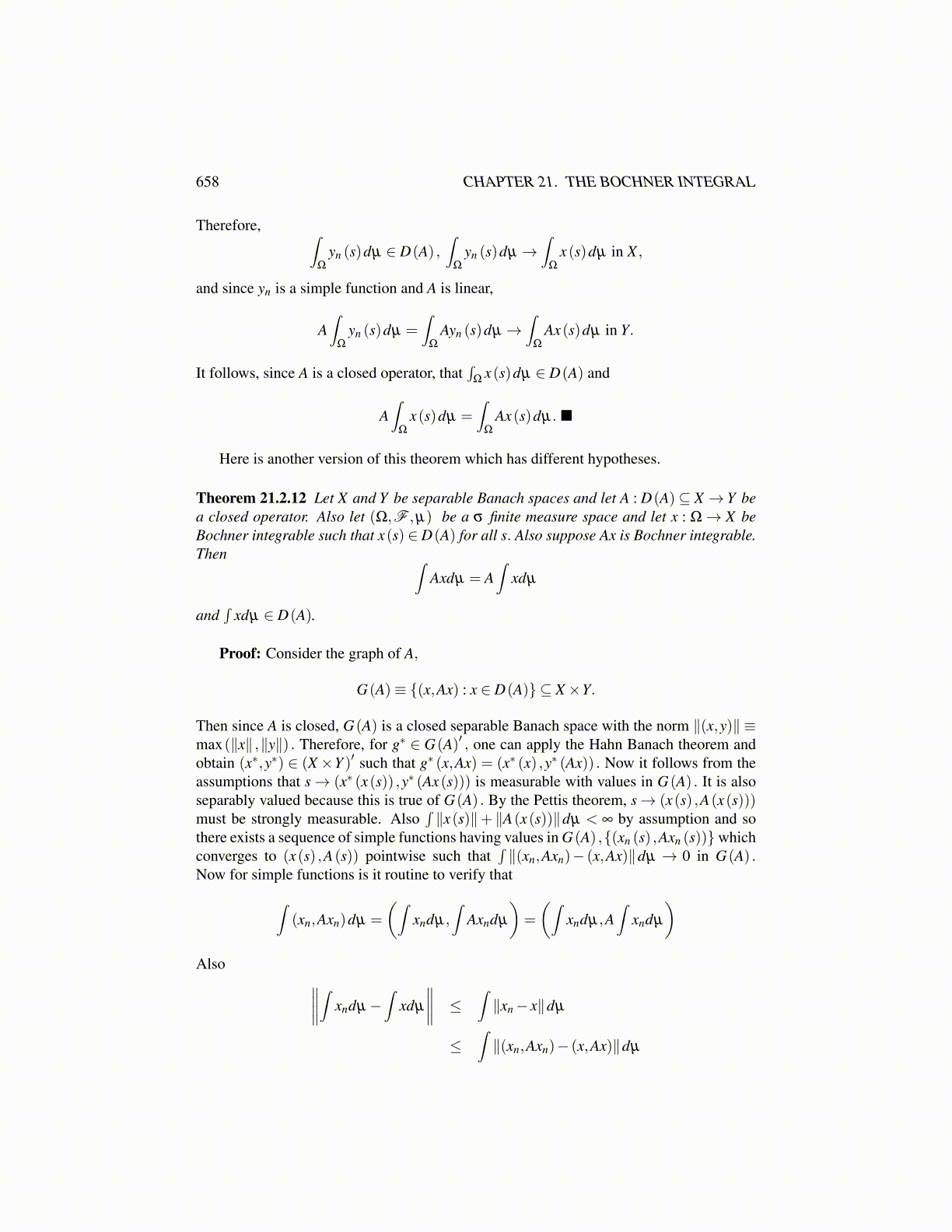
658 CHAPTER 21. THE BOCHNER INTEGRAL
Therefore, ∫Ω
yn (s)dµ ∈ D(A) ,∫
Ω
yn (s)dµ →∫
Ω
x(s)dµ in X ,
and since yn is a simple function and A is linear,
A∫
Ω
yn (s)dµ =∫
Ω
Ayn (s)dµ →∫
Ω
Ax(s)dµ in Y.
It follows, since A is a closed operator, that∫
Ωx(s)dµ ∈ D(A) and
A∫
Ω
x(s)dµ =∫
Ω
Ax(s)dµ.
Here is another version of this theorem which has different hypotheses.
Theorem 21.2.12 Let X and Y be separable Banach spaces and let A : D(A)⊆ X → Y bea closed operator. Also let (Ω,F ,µ) be a σ finite measure space and let x : Ω→ X beBochner integrable such that x(s) ∈D(A) for all s. Also suppose Ax is Bochner integrable.Then ∫
Axdµ = A∫
xdµ
and∫
xdµ ∈ D(A).
Proof: Consider the graph of A,
G(A)≡ {(x,Ax) : x ∈ D(A)} ⊆ X×Y.
Then since A is closed, G(A) is a closed separable Banach space with the norm ∥(x,y)∥ ≡max(∥x∥ ,∥y∥) . Therefore, for g∗ ∈ G(A)′ , one can apply the Hahn Banach theorem andobtain (x∗,y∗) ∈ (X×Y )′ such that g∗ (x,Ax) = (x∗ (x) ,y∗ (Ax)) . Now it follows from theassumptions that s→ (x∗ (x(s)) ,y∗ (Ax(s))) is measurable with values in G(A) . It is alsoseparably valued because this is true of G(A) . By the Pettis theorem, s→ (x(s) ,A(x(s)))must be strongly measurable. Also
∫∥x(s)∥+ ∥A(x(s))∥dµ < ∞ by assumption and so
there exists a sequence of simple functions having values in G(A) ,{(xn (s) ,Axn (s))}whichconverges to (x(s) ,A(s)) pointwise such that
∫∥(xn,Axn)− (x,Ax)∥dµ → 0 in G(A) .
Now for simple functions is it routine to verify that∫(xn,Axn)dµ =
(∫xndµ,
∫Axndµ
)=
(∫xndµ,A
∫xndµ
)Also ∥∥∥∥∫ xndµ−
∫xdµ
∥∥∥∥ ≤∫∥xn− x∥dµ
≤∫∥(xn,Axn)− (x,Ax)∥dµ